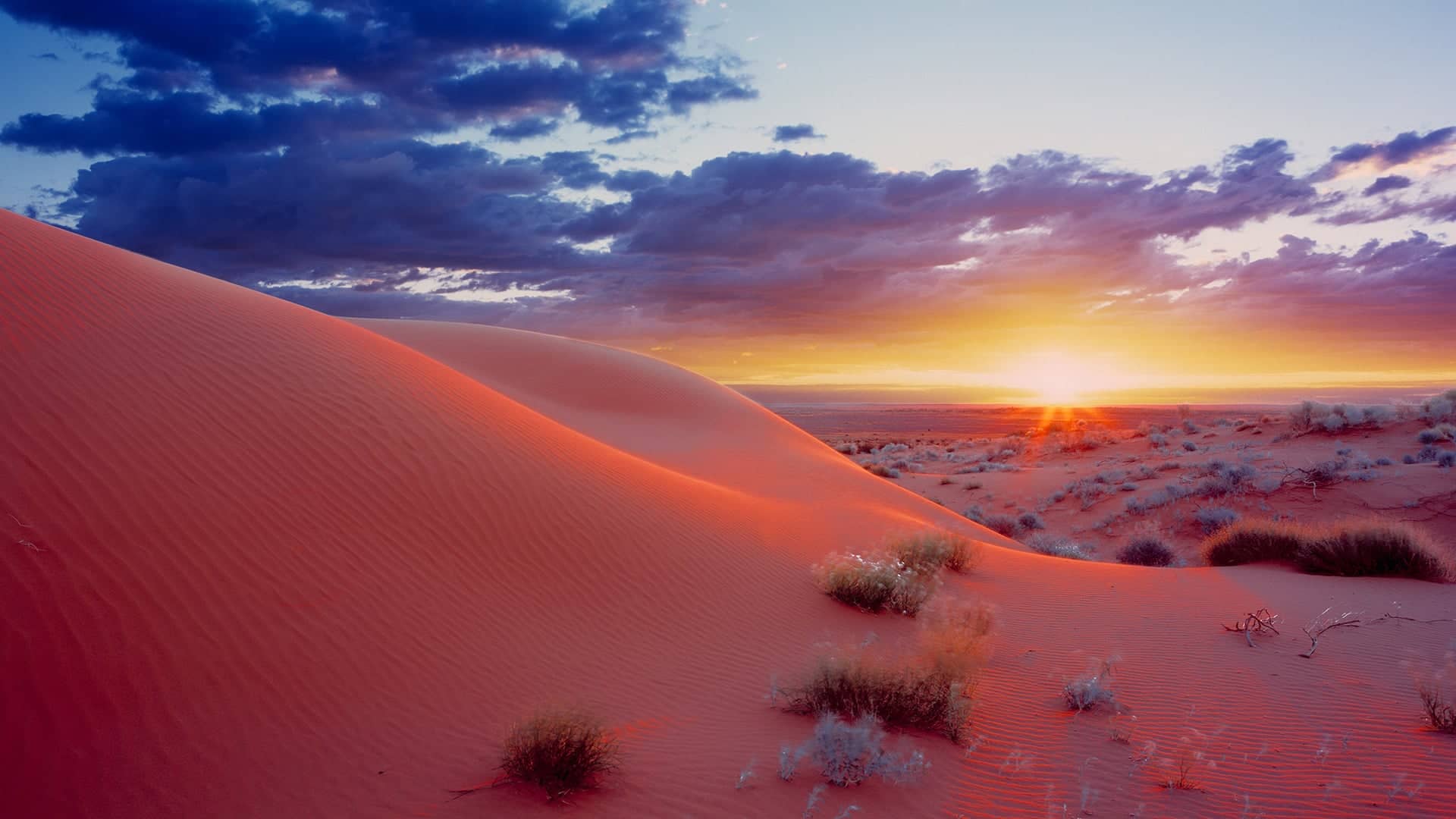Connecting the Northern Territory, South Australia, and Queensland is more than 200,000 square kilometres of rolling red sand dunes shaped by westerly winds. This is the Simpson Desert, and it’s the largest sand dune desert in the world.
WORDS Ella Chronowski
The Simpson is a land of dramatic contrasts. It overlaps borderlines but has a unique sense of place. One where the immense blue sky juxtaposes the expansive dry red earth below. Where the quiet stillness is broken by temporary flooding and dust storms that occur seasonally. The wind is fickle, and the conditions are dry, but the feeling of hundreds of kilometres of dunes stretching out as far as the eye can see can be summed up in one word, freedom.
Periodic flooding in the Simpson brings with it brilliant flora and fauna. After rain showers, pine trees and native wildflowers blanket the red sand with yellow daisies, billy buttons and parakeelia sprouting through. Coolabah trees line the desert creeks, and the shade they offer is a welcome reprieve that’ll have you singing Waltzing Matilda.
Unique wildlife thrives in the harsh desert conditions, with an array of wildlife calling the Simpson home. Over 190 bird species have been recorded in the desert, from the tiny zebra finch to the majestic wedge-tailed eagle. Even waterbirds congregate and flock to the seasonal waterholes and lakes that appear in the salt pans after the rain.
An estimated 92 species of reptiles are found throughout the desert. Some reptiles, like the sand goanna and the centre bearded dragon look ancient, and you get the sense that they’ve been there longer than the desert itself.
There are 44 mammal species which can be spotted in the desert, some native to Australia and some considered pests. Wild camels, foxes and dingos roam across the sandy plains, and the bilby, once common across Central Australia, is now confined to the dessert dunes.
Despite its dry and uninhabitable appearance, the Simpson has a rich Aboriginal heritage dating back an estimated 5000 years. Criss-crossed with Aboriginal Dreaming Tracks and sacred sites, the Simpson was home to the Wangkangurru people, hunters and gatherers who travelled widely across the desert, only camping in a single place for a short time. The Wangkangurru people had an extensive system of mikiri or native wells, where they would camp and draw water from the earth, and when food and water became scarce, they would move on.
In response to the 2009 Simpson Desert Land Claim, 110,000 hectares of land was returned to the Aboriginal Traditional Owners. In 2019, the Simpson Desert was renamed to Munga-Thirri-Simpson Desert, agreed with the traditional owners the Wangkangurru Yarluyandi people, and is an important act of reconciliation. The name Munga-Thirri means ‘big sandhill Country’, and the inclusion of the traditional name pays respect to ancestors and acknowledges the aspirations of the Traditional Owners for their Country.
With its vast expanse of rolling dunes, the Simpson is often considered the Holy Grail of four-wheel driving. Seemingly endless horizons invite you to journey beyond, and in a dusty sea of red there is one aptly named The Big Red. Standing 30 metres tall, The Big Red marks the symbolic edge of the Simpson and calls you to conquer the hill and the 1,140 parallel sand dunes that follow.

Explore the world’s largest parallel dune desert on a 2-week desert safari tour with Outback Spirit. Learn more about this great escape to Outback Australia at https://www.outbackspirittours.com.au/tours/simpson-desert-expedition/